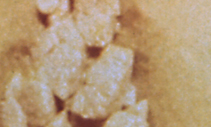Genital warts – the facts
More than 70% of Canadians will have an HPV (human papillomavirus) infection at some point in their lives. Of the more than 100 types of HPV that have been discovered, two types, HPV 6 and 11, are known to cause about 90% of genital warts, a sexually transmitted infection (STI). Genital warts, also called anogenital warts or venereal warts, are extremely common, affecting 1% of all sexually active women and men every year.
Genital warts are sometimes difficult to see with the naked eye, so people with genital warts are often unaware that they have them and that the infection can spread without their knowledge. Although HPV infection is an STI, you don't need to have sex (oral, vaginal, or anal) to spread the infection – just an intimate encounter resulting in direct skin-to-skin contact with someone who already has the virus. The virus usually spreads through a break in the skin. You can't catch HPV from a doorknob or toilet seat.
What do genital warts look like?

Genital warts are raised or flat, soft, flesh-coloured growths - often in clusters that are "cauliflower-like" - that occur on the skin surface of the anus and genital areas. In females, the most common sites are the cervix, vagina, vulva (the outside of the female genital area), and anus. In males, genital warts occur most frequently on the anus and penis. Genital warts are usually painless, but for some people they may cause a burning sensation, itching, and some bleeding. About two-thirds of people who have sexual contact with a partner who has genital warts will develop warts themselves, usually within 3 months of contact.
Look at this collection of pictures to see if you can tell what genital warts look like.
How to prevent genital warts
There is no cure for genital warts, so it's important to prevent yourself from getting HPV in the first place. Ways to prevent HPV spread and infection:
- don't have sex (abstinence): this may not be an option for you, but it's important to know that not having sex decreases the risk of HPV infection and genital warts.
- reduce the number of sexual partners: this will reduce HPV along with other STIs. Up to 60% of women get HPV infection from their first partner. This means that not only do you have to look at the number of sexual partners you've had, but also the number of sexual partners your partner has had. Click here to see how quickly HPV can spread through your network of sexual partners.
- wait before having sex with a new partner: waiting before having sex may increase the chance that an HPV infection from a previous partner will clear.
- avoid any sexual contact if you suspect genital warts: signs of genital warts include blisters, sores, or itching, which are all indications that an HPV infection is present and there is a large chance of spreading it.
- use condoms at all times: condoms must be used consistently and properly to be most effective. Although condoms won't provide 100% protection against HPV, they will decrease your chances of getting HPV or spreading it to your partner. A condom may not protect you if your partner has the HPV infection outside the area that the condom covers. Condoms help prevent other STIs such as HIV and chlamydia, so don't stop using them!
- get vaccinated against HPV: There are 3 HPV vaccines available.
- Nine-valent: protects against 9 types of HPV
- Quadrivalent: protects against 4 types of HPV
- Bivalent: protects against 2 types of HPV
Living with HPV
People living with HPV infection and its complications (e.g., genital warts) undergo a wide range of emotions, including denial, fear, betrayal, embarrassment, disgust, depression, lowered self-esteem, and reduced sexual desire. Therefore, many people choose to get treatment for genital warts, even though they generally go away on their own in about 12 to 24 months in people with healthy immune systems. Treatment options include putting medication directly on the warts, freezing or burning the warts, or surgery.
All material copyright MediResource Inc. 1996 – 2025. Terms and conditions of use. The contents herein are for informational purposes only. Always seek the advice of your physician or other qualified health provider with any questions you may have regarding a medical condition. Source: www.medbroadcast.com/healthfeature/gethealthfeature/Genital-Warts-and-HPV

